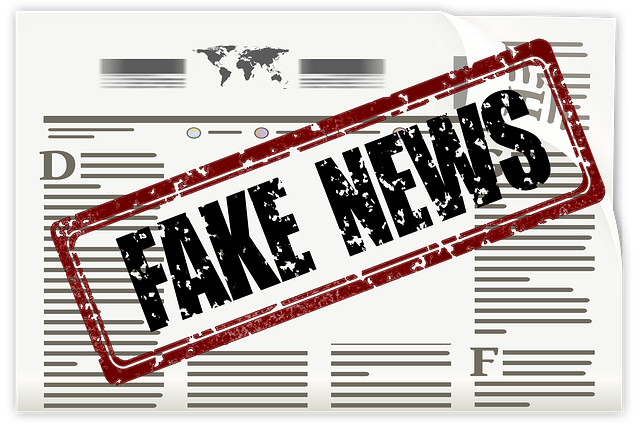 New research reveals Facebook’s difficulty in controlling fake news reports.
New research reveals Facebook’s difficulty in controlling fake news reports.
A BuzzFeed News analysis found 29 Facebook pages and associated websites spreading fake news through Facebook Instant Articles. Most of those sites harvested ad revenue through the network, with Facebook itself taking a cut of revenue. At least 24 of the Facebook pages participated in Facebook Audience Network that automatically places ads in articles and gives Facebook a piece of the revenue.
BuzzFeed News said it quickly located fake news stories on Instant Articles by searching Facebook for keywords related to fake stories, such as, “Update: Cop Who Arrested Malia Obama Found Dead Under Suspicious Circumstances.” Search results showed multiple versions of that same hoax. Facebook says it forbids fake news in Instant Articles and removed the articles BuzzFeed identified as Fake News. Based on the detection methodology BuzzFeed used, there are probably many hundreds more fake news sites that avoided detection.
When viewers load an Instant Article, they’re invited to read other stories from the same publisher. In other words, Facebook promotes more fake news stories once viewers load the first one. Some of the fake news websites displayed on Instant Articles were owned by a man named Ergyn Gashi in Serbia.
The design of Instant Articles obscures information about a news source that could be used to help evaluate the content, such as the original URL, BuzzFeed points out.
Mainstream Publishers Drop Instant Articles
Facebook initially touted Instant Articles as a way for publishers to gain readers and advertising income. The articles load quickly within the Facebook mobile app. Publishers can include their own ads or participate in Facebook’s ad network.
While fake news publishers evidently like Instant Articles, legitimate publishers are abandoning the feature. Research by the Tow Center for Digital Journalism at Columbia University suggests that more than half the publishers who participated in its launch have dropped it.
Some publishers initially embraced Instant Articles. The Washington Post, for instance, said it would “send 100 percent of its stories” to Facebook. Now the Post seems to have lost interest. The Tow Center research found no Instant Articles from the Post.
Facebook’s Efforts Criticized
BuzzFeed’s research highlights the difficulty in combatting fake news stories as well its financial conflict of interest in their proliferation. Facebook has suffered incessant problems with fake news. In its latest attempt to eliminate fake news stories, Facebook is asking randomly selected users to rate the trustworthiness of news outlets. “We surveyed a diverse and representative sample of people using Facebook across the U.S. to gauge their familiarity with, and trust in, various different sources of news,” states Adam Mosseri, head of news feed. “This data will help to inform ranking in News Feed.”
Facebook thinks crowdsourcing reviews to “the community” is the most objective way to determine quality of news sources. But some say the strategy is flawed. Reviewers tend to trust fake news sites or otherwise low-quality sites with names closely resembling legitimate mainstream publications, says Bernard Clemm, a researcher at the European University Institute, Florence. Mimicking names of legitimate publishers is a favorite strategy of fake news sites.
In addition, because its surveys are voluntary, they’ll suffer from what academics call non-response bias. Partisan viewers will disproportionally participate in surveys and give high ratings to their favorite news outlets, Clemm predicts.
“Facebook is proposing a superficial way to measure a complex social phenomenon,” he writes in The Washington Post.
The Media Monitoring Solution
More than a few observers say Facebook’s efforts to control fake news have been half-hearted and ineffectual. While the network continues to struggle for solutions, many organizations are turning to media monitoring services to monitor fake news websites through media monitoring services. Celebrities, politicians and other well-known individuals also benefit from monitoring fake news sites for their names.
Media monitoring for your company name, brands and key spokespeople can quickly spot misinformation about your organization. Once alerted by automated email messages, PR pros can swiftly correct false information and request removal of fake news stories.
Most media monitoring services, however, do not specifically monitor sites that are known distributors of fake news, though they do deliver “fake news” or factually incorrect articles from traditional news sources. The lack of coverage of fake news sources is a shortcoming in media monitoring services. Businesses need to monitor fake news sources to protect their reputations.
Bottom Line: Facebook’s efforts to control fake news reports have been criticized as half-hearted and ineffectual. New research shows fake news purveyors post their made up stories on Instant Articles, Facebook’s native publishing feature, and share advertising income with the network. Experts say its latest attempt to ask its users to rate trustworthiness of news sources will ultimately fail. Media monitoring of fake news site remains the only viable solution for businesses and celebrities seeking to protect their reputations against fake news attacks.
William J. Comcowich founded and served as CEO of CyberAlert LLC, the predecessor of Glean.info. He is currently serving as Interim CEO and member of the Board of Directors. Glean.info provides customized media monitoring, media measurement and analytics solutions across all types of traditional and social media.



